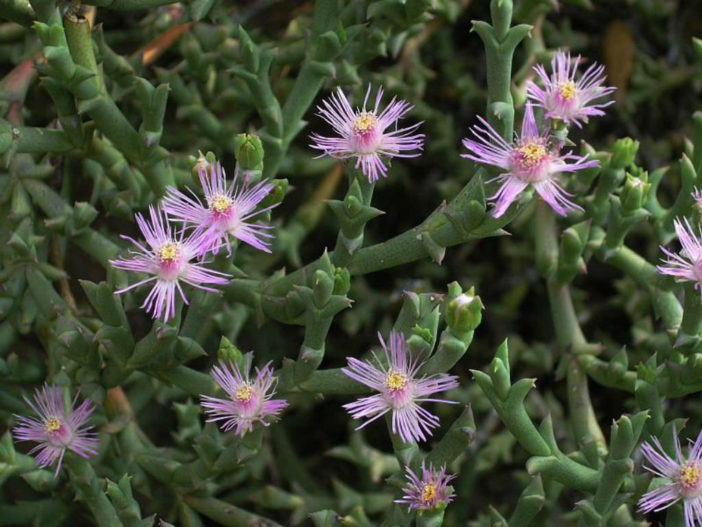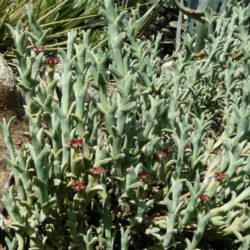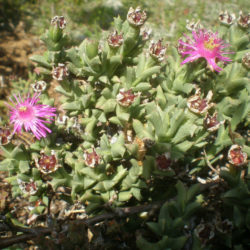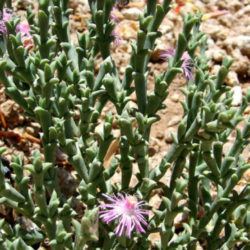Scientific Name
Ruschia uncinata Schwantes
Common Name(s)
Doringvygie
Synonym(s)
Mesembryanthemum uncinatum, Mesembryanthemum uncinellum, Ruschia uncinella
Scientific Classification
Family: Aizoaceae
Subfamily: Ruschioideae
Tribe: Ruschieae
Genus: Ruschia
Description
Ruschia uncinata is a mat-forming succulent with interesting leafless, gray-green, cylindrical stems with small opposite pointed nodes that alternate 90 degrees from one set to the next. It can grow up to 12 inches (30 cm) tall with a spread of several feet.
The flowers are pinkish-purple and have petals that radiate outwards along the edge but are erect in the middle of the flower, surrounding the reproductive parts. They are up to 0.8 inches (2 cm) in diameter and usually appear in spring and summer.
Origin
The native range of this species is from the Great Karoo and Vanrhynsdorp in the Western Cape province of South Africa to Namibia.

Hardiness
USDA hardiness zones 9b to 11b: from 25 °F (−3.9 °C) to 50 °F (+10 °C).
How to Grow and Care
Ruschias are popular for use in the garden. Their tolerance to drought makes them ideal water-wise plants in the arid and semi-arid parts of the world. Brilliant seasonal color displays can be achieved by mass planting in large areas and using many different growth forms.
There are tufted, round-shaped plants well suited for containers and flower boxes. The low-growing and spreading species cover well, will do wonders to terraces and embankments, and will easily stabilize loose sand. Then there are the bigger, more robust types best used among larger plants or combined with other succulents in rock gardens and mixed beds.
Remember that Ruschias are short-lived plants, and it is essential to continue replanting every three years. All species attract a host of insects, thus ideal subjects to attract wildlife to the garden throughout the year.
Once rooted or germinated, cuttings and seedlings can be feed with organic fertilizers to enhance vigor and health.
Learn more at How to Grow and Care for Ruschia.
Links
- Back to genus Ruschia
- Succupedia: Browse succulents by Scientific Name, Common Name, Genus, Family, USDA Hardiness Zone, Origin, or cacti by Genus
Photo Gallery
Click on a photo to see a larger version.



